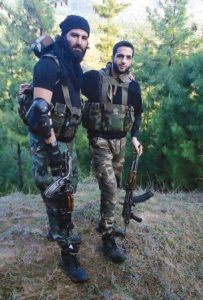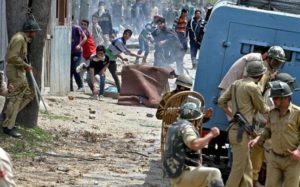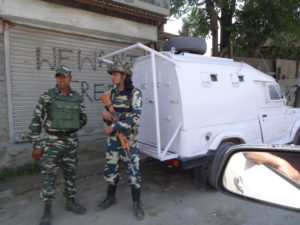Saw the movie Tahaan today. Have been wanting to see that film for a long long time and it had even been broadcasted on some channels a couple of times but I somehow used to miss it. Finally, I got my hands on the DVD and after much wait I managed to see it. The Santosh Sivan film tells a tale of young Kashmiri kid Tahaan (which literally translates into God’s blessing) and his donkey Birbala.
Through the intricate interweaving of the two central characters the story keeps moving indolently much like the gentle stream that is constantly shown in the film. While the story is about innocence, it somehow reflects upon the deep scars that have been imprinted upon the valley. More than a movie on Kashmir, Tahaan is a movie on Kashmiriyaat.
For me, Kashmir is basically a beautiful haze, a charming valley of deodar trees, where saffron flowers abound. Then there is the beautiful charming Dal lake, on which shikaras or small canoes keep floating hither-thither carrying all sort of goods and merchandise. Houseboats also abound on the Dal lake, where honeymoon couples can spend a few days and nights in looking at the millions of stars that shine in the clear skies. Then comes the lilting music that has notes from Sarod and little or no words, except the melodious twang of the strings. This is followed by the supposedly amazing Kahwa that is boiled continuously on curvaceous Kashmiri kettles. The amazing and intricate rugs come next, rather royal and heavy these carpets are fairly ubiquitous and yet hardly affordable.
Surely, one cannot talk of Kashmir without talking about Pashmina shawls, made from the wool of a much rare mountain goat these fabled shawls can fit in a matchbox or pass through a ring, even people who have never set an eye on these shawls can be heard swearing on these miraculous features. And finally, the oh so beautiful women of the valley, whose cheeks are even fuller and redder then those apples that are much famous all over.
This is the image of Kashmir that we have kind of grown up with, embossed again and again by the numerous Hindi films and tales from parent and grandparents. Thanks to Kashmir ki Kaali, Silsila, Roja, Mission Kashmir, Fanaa, etc. there is a Kashmir that we all cherish in our minds, fantasise about in leisure, dream of a day we will see with our own eyes.
And yet there is another Kashmir that forces itself on our consciousness, a Kashmir of guns, grenades, blasts, killings, Terrorists, encounters, LOC, rocket launchers, Amarnath Yatra, JKLF, AK47s, Kargil, army patrols, strikes, revolts, anti India protests, Article 370, army atrocities, secessionists, Wazir-e-azam, POK, Panun Kashmir, displaced pundits, child warriors, curfew, dull elections, etc. There is a deep chasm between the Kashmir we dream off and the Kashmir we dread.
Continue reading …
 Bhat’s death seems to be like deja vu, a replay, of the anarchy that had gripped the Valley last year when Burhan Wani, another Hizbul terrorist, was gunned down by Indian forces.
Bhat’s death seems to be like deja vu, a replay, of the anarchy that had gripped the Valley last year when Burhan Wani, another Hizbul terrorist, was gunned down by Indian forces.  Meanwhile, back in mainland India, Kashmir is portrayed as a law and order problem, Pakistan is blamed for fanning the flames of violence, and so on. The common argument is that till 1989, weren’t the Kashmiris cohabiting with Indians happily, letting the Yash Chopras of the world shoot Bollywood movies in the charming locales. Now, if azaadi was not desirable till the 90s, how did the game change so drastically and dramatically? Why did the Shikara-driving or Kahwa-sipping Kashmiri suddenly develop political ambitions and such massive ones?
Meanwhile, back in mainland India, Kashmir is portrayed as a law and order problem, Pakistan is blamed for fanning the flames of violence, and so on. The common argument is that till 1989, weren’t the Kashmiris cohabiting with Indians happily, letting the Yash Chopras of the world shoot Bollywood movies in the charming locales. Now, if azaadi was not desirable till the 90s, how did the game change so drastically and dramatically? Why did the Shikara-driving or Kahwa-sipping Kashmiri suddenly develop political ambitions and such massive ones? the camps, the schools, the ATMs, everywhere that you see are men in fatigues armed with automatics. One gets a rather odd feeling at seeing such pervasive military presence. I mean, you kind of wonder, whether you have accidentally landed in Kabul or Baghdad instead of Srinagar.
the camps, the schools, the ATMs, everywhere that you see are men in fatigues armed with automatics. One gets a rather odd feeling at seeing such pervasive military presence. I mean, you kind of wonder, whether you have accidentally landed in Kabul or Baghdad instead of Srinagar.